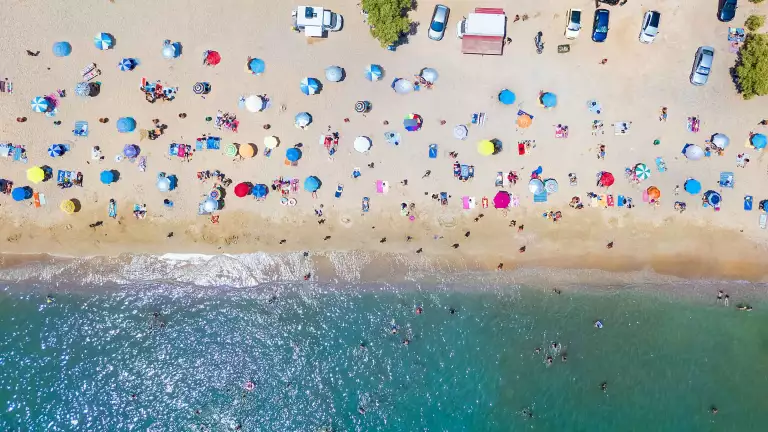Right now, some popular travel destinations around the world are struggling to cope with the impact of too many tourists, also known as overtourism.
In response, just in recent months:
- Amsterdam announced a ban on new hotels.
- Venice limited tour group sizes to 25 people.
- Bali introduced a $10 entry tax on foreign tourists.
- The Japanese town of Kawaguchiko built a barrier to deter tourists from crowding at a popular selfie spot with a view of Mount Fuji.
Many more places, including the US state of Hawaii, are currently considering tourist fees and other prohibitive measures.
The So What
“Enthusiasm for tourism is back with a vengeance post COVID and is set to keep growing. Managing it well means finding a path that balances economic growth opportunities with environmental sustainability and the needs of local residents,” says Lenita Tobing , BCG’s global topic leader for tourism.
“For sustainable tourism to take root, countries will need to prioritize strategic planning.”
The United Nations World Tourism Organization estimates that international tourism will grow by 15% year-on-year in 2024, returning to pre-pandemic levels for the first time.
Some of the factors driving people to travel more include:
- The rise of a growing middle class in low- and middle-income countries with higher disposable income to afford travel abroad.
- Social media inspiring more people to visit already popular destinations and discover lesser-known ones. It is also impacting thematic tourism trends, such as wellness retreats.
For many governments, tourism is becoming a strategic sector to boost GDP growth, job creation, and the diversification of their economies.
- Travel and tourism accounted for 9% of global GDP at $9.9 trillion in 2023, and accounted for some 330 million jobs worldwide, according to the World Travel and Tourism Council.
- By 2034, the industry body predicts that travel and tourism will grow to 11% of the global economy and account for 450 million jobs.
- In 2023, international spending on travel and tourism increased by 33.1% to reach $1.63 trillion, whereas domestic spending rose by 18% to reach nearly $5 trillion.
Efforts to mitigate overtourism are complicated by the impact on small and medium business owners. Many SMEs depend on tourism for their livelihoods, particularly in Asia and Africa.
Now What
These are some levers to secure a more sustainable future for tourism.
Manage capacity. This could include capacity limits, extra visitor fees, or taxes. Local governments can consider charging entry fees to day visitors, which might encourage more overnight tourists and make their stay more remunerative for local communities. Entry fees can also be higher for popular tourist spots and less expensive for those with lower footfall. Restricting entry through lottery or quotas can further help in predicting the number of tourists arriving at popular destinations at the same time. Some US national parks, for example, have well-developed crowd control measures and use lotteries to manage the volume of travelers on certain trails.
Spread the tourists out. Besides standard travel packages, travel agencies can also market off-the-beaten-path attractions or build itineraries and recommendations that encourage visits to lesser-known areas. Tourism authorities can also leverage personalization based on data to divert guests away from hot spots during peak times. Florence, for example, has an app that suggests routes and experiences to visitors based on current tourist demand.
Increase awareness marketing. “Marketing campaigns that educate travelers on how to be a respectful traveler can go a long way in reducing the distress caused to locals,” says Tobing. This includes information on how to behave at heritage sites, maintain decorum, and adhere to local norms. Encouraging the use of licensed local tourist guides is another way to help foreign travelers have an immersive travel experience in ways that are respectful of local communities. Bhutan is one example of a country doing this.
Double down on strategic planning. In addition to the above measures, which can be enforced quickly, Tobing believes that over the long term, countries need to adopt strategic tourism planning. This could entail borrowing an approach that is popular with consumer goods companies. Governments need to start by segmenting tourist destinations as main, secondary, and offbeat. Next, they should assess the capacity of these destinations to welcome travelers, and accordingly spread tourists across the country through the year. This will help in distributing high season into more sustainable tourism periods.




